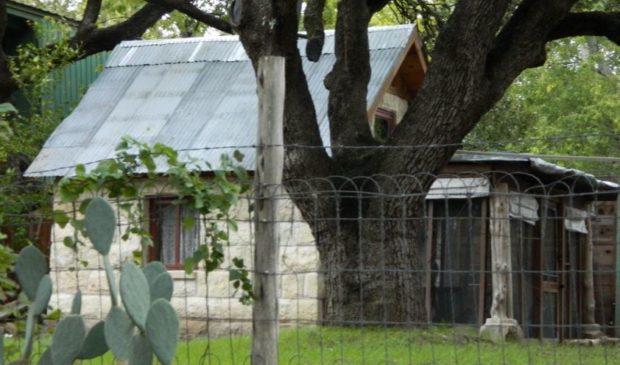Historic Landmark Commission postpones case for not following the process
Monday, November 26, 2018 by
Jessi Devenyns For over a year, the Historic Landmark Commission has been going back and forth over the plans for the back lot of the Stanley Homestead at 1809 Newton St.
“What we’re seeking is the Certificate of Appropriateness for the new construction that we are contemplating,” explained William Hodge, the architect representing the applicant at the Nov. 19 meeting of the commission. “To the layperson, they would not even know they’re (the historic home and the proposed new construction) on the same property.”
Partially this has to do with the fact that last year the applicant was able to secure the relocation of the historic outbuilding closer to the main homestead structure, which allowed for more room to construct new homes.
Even with these assurances for maintaining historic appearance, the commissioners were not impressed with the plans or how they came in front of the commission. “This subdivision (of the back lot) was made without the Certificate of Appropriateness,” said Commissioner Kevin Koch. He brought up the Google Maps street view to show that the lot is already subdivided and the plots are listed as available.
Commissioner Beth Valenzuela agreed, saying, “I think it’s unfortunate that they’re this far along in the process and just now understanding that they have to go through the Certificate of Appropriateness process.”
In fact, few of the commissioners had sympathy for the applicant’s unconventional approach to having the building plans approved for this historic property after putting the individual properties up for sale. A Certificate of Appropriateness is required for all non-routine maintenance exterior work on a historic property, including alterations to the visual appearance of a site or building facade. A building permit is not released until approval of the certificate.
Not only had the applicant never applied for a Certificate of Appropriateness for his plans, but the commission had never seen any of the building plans before the Nov. 19 meeting. According to the rules for obtaining a Certificate of Appropriateness, a building permit application copy must be available for review by the Historic Landmark Commission to ensure that site plans conform to all applicable zoning regulations.
Instead, in committee meetings, commissioners indicated that they had merely discussed how to move the historic outbuilding off the north side of the subdivided lot in order to preserve it and allow for some sort of construction outside of the critical root zones of the heritage trees that dot the site. There were no specific plans presented in those meetings.
What was presented at the meeting for consideration was a condo regime with two units and an accessory dwelling unit, or ADU.
Commissioner Terri Myers said that the plans were “entirely inappropriate” because due to the size, scale and design of the proposed buildings, “The plans for new construction don’t respect the history.”
Historic Preservation Officer Steve Sadowsky took a different stance, saying, “This does not really compromise the historic character.” Notes from staff on the application do say that they recommend that the applicant “reduce the square footage of the proposed houses … maintaining the spatial relationship between the historic landmark house and the historic landmark outbuilding.”
Still, Commissioner Koch argued that the primary concern is not the design of the new construction, but how closely it encroaches on the historic south side of the divided lot. “My particular concern right now is how far unit one comes within 15 feet of the (original) house in the back,” said Koch.
Partially, this placement choice has to do with the number of trees on the site making over 50 percent of the lot unbuildable, according to Commissioner Alex Papavasiliou. “If it’s a question of aesthetic it’s one thing, but these guys are kind of stuck in a sense,” he said.
The argument that the applicant used to defend his upside-down approach to the process – saying that the designs met the specifications of the city arborist and also remain an appropriate distance from the historic structure – didn’t hold any water for the commissioners, who pointed out that as professional builders they should be fully aware of how to approach designing new-build homes on any lot, especially a historic one.
“This is why we insisted on the (historic) zoning,” said Commissioner Myers. Sadowsky noted that if the Certificate of Appropriateness was approved for the proposed design, the applicant would seek to remove the historic zoning on his portion of the property, which has been in effect since 2000.
The commissioners unanimously voted to postpone the hearing until next month so that they would have the time to review the full designs and comment on them before approving a Certificate of Appropriateness.
Photo courtesy of the city of Austin.
The Austin Monitor’s work is made possible by donations from the community. Though our reporting covers donors from time to time, we are careful to keep business and editorial efforts separate while maintaining transparency. A complete list of donors is available here, and our code of ethics is explained here.
You're a community leader
And we’re honored you look to us for serious, in-depth news. You know a strong community needs local and dedicated watchdog reporting. We’re here for you and that won’t change. Now will you take the powerful next step and support our nonprofit news organization?











